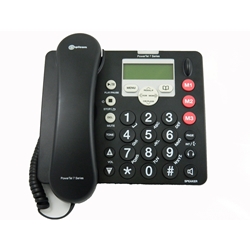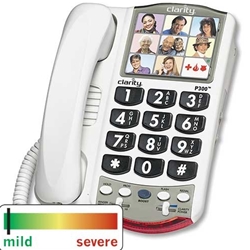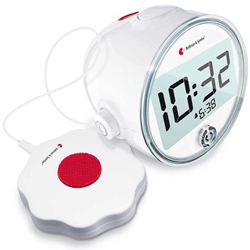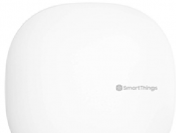Hearing loss can make many daily activities difficult, from talking on the telephone to waking up on time to simply having a conversation. Â Whether you or a loved one suffers from some degree of hearing loss, there’s a range of devices designed to help people cope with their hearing impairment. Â Here are some of the most popular devices on the market today. Â Although a professional hearing test is recommended for anyone who suspects their hearing isn’t as good as it used to be, all of the devices shown here can be purchased without a doctor’s prescription.
Amplified Phones
Talking on the household phone can be extremely frustrating for people with hearing loss. Fortunately, there’s a wide selection of amplified phones for the hearing impaired that offer a variety of features, including large keypads, adjustable volume and tone, extra loud ringers and hearing aid compatibility. Use this checklist to find the amplified phone that best fits your needs of those of your loved one:
1) Amplification Level
Phones for the hard of hearing have three levels of amplification, based on the degree of hearing loss:
- Mild Hearing Loss (20 – 30dB) – For listeners who strain to hear phone conversations and find that they are missing words.
- Moderate Hearing Loss (30 – 45dB) – For listeners who find that they frequently ask the other party to repeat themselves.
- Severe Hearing Loss (50 – 60 dB) – For listeners who have so much difficulty hearing phone conversations, they often avoid using the phone.
2) Portability
 When choosing between a corded or cordless phone, consider the user’s mobility and lifestyle and where the phone will be located in the home.
When choosing between a corded or cordless phone, consider the user’s mobility and lifestyle and where the phone will be located in the home.
- Corded amplified phones have a large base that is bulkier than a cordless phone but typically offer a large, easy-to-read keypad with a bigger caller ID and phone number display.  Some also have a built-in answering machine and speakerphone.
- Cordless amplified phones appeal to people with hearing loss who like to walk around while they talk. Some amplified phone systems have a corded base that is “expandable†so you can have additional phones in other rooms.
- Hands-free phones are ideal for people with limited mobility or some degree of paralysis. For example, the Serene Innovations RCx-1000 Remote Control Speakerphone allows users to answer incoming calls using voice commands.  Outgoing calls are made using a wireless pendant that accesses up to 32 frequently called numbers.  For people with other disabilities, the RCx-1000 Speakerphone can be controlled by either a pillow switch or air switch, both sold as accessories.
3) Hearing Aid Compatibility
Most amplified phones are hearing aid compatible, but many newer cordless amplified phones are also TIA-1083 compliant, a performance standard that greatly reduces the interference or audible “buzzâ€Â that hearing aid wearers often experienced when using a cordless phone.
4) Other Handy Features
 Visual Aides – For users with vision loss, there are amplified phones with bright visual ringers to signal incoming calls. Some models have extra large, back-lit keypads and large LCD displays to make dialing easier.
Visual Aides – For users with vision loss, there are amplified phones with bright visual ringers to signal incoming calls. Some models have extra large, back-lit keypads and large LCD displays to make dialing easier.- Photo Address Book — Some amplified phones have speed dial buttons that you can customize with photos of family and friends.
- Bluetooth Connection — This allows you to connect your cell phone wirelessly to your amplified phone via Bluetooth, so cell phone calls can be answered on your amplified handset — a useful feature for homes without a landline connection or for use in a nursing or assisted living facility.
- Vibrating Wristshaker — Acts as a phone ring alert or remote answering device.
- Multiple User Settings – Automatically adjusts volume and tone settings for each user in the household.
- Emergency Dialer – Dials preprogrammed emergency contacts when the emergency button is pressed.
Visual Doorbell Alerts
- Strobe and Sound Signaler — This wireless, battery-powered doorbell uses a flashing strobe signaler and an audible chime to let you know that someone is at the door. Plugs into any wall outlet and has a range of up to 100 feet.
- Flashing Lamp Signaler – Place this unit close to the sound you want to monitor and plug in a lamp.  When the selected sound occurs, the lamp flashes.  Use it to signal any important sound, like a phone, kitchen timer, baby crying, etc.
Vibrating Alarm Clocks
 Super Loud + Bedshaker — This vibrating alarm clock uses three methods to wake users with hearing loss:  a powerful bedshaker, high-intensity LED lights and a built-in audible alarm that increases in sound volume up to 100dB.
Super Loud + Bedshaker — This vibrating alarm clock uses three methods to wake users with hearing loss:  a powerful bedshaker, high-intensity LED lights and a built-in audible alarm that increases in sound volume up to 100dB.- Loud + Vibrating Wristband – Waken one or two sleepers on varied schedules with this dual alarm clock.  It features a loud audible alarm (75dB) and a silent vibrating wristband alarm that can be set for different wake up times.
Smoke and Carbon Monoxide Alert
Create a fire and CO alerting system for homeowners with hearing loss with a Silent Call Sidekick II Receiver with Strobe Light and add the fire alarm transmitter and the carbon monoxide transmitter accessories.  If smoke or CO is detected, the distinctive LEDs light up on the receiver. For extra protection while sleeping, add a bedshaker to receive vibrating alerts.
Other Devices for Hearing Loss
Other popular devices for people with hearing loss include:
TV Listening Systems — The perfect solution for anyone who needs to turn up the volume in order to enjoy their favorite TV show.
Telephone Signalers — This special cell phone cradle lights up and flashes when there’s an incoming call or text, so there’s no more missed calls or messages.
Personal Sound Amplifiers – For people who won’t wear a hearing aid or can’t afford one, this device makes conversations easier.  Also helps with following the dialogue on TV shows or at the movie theater.





